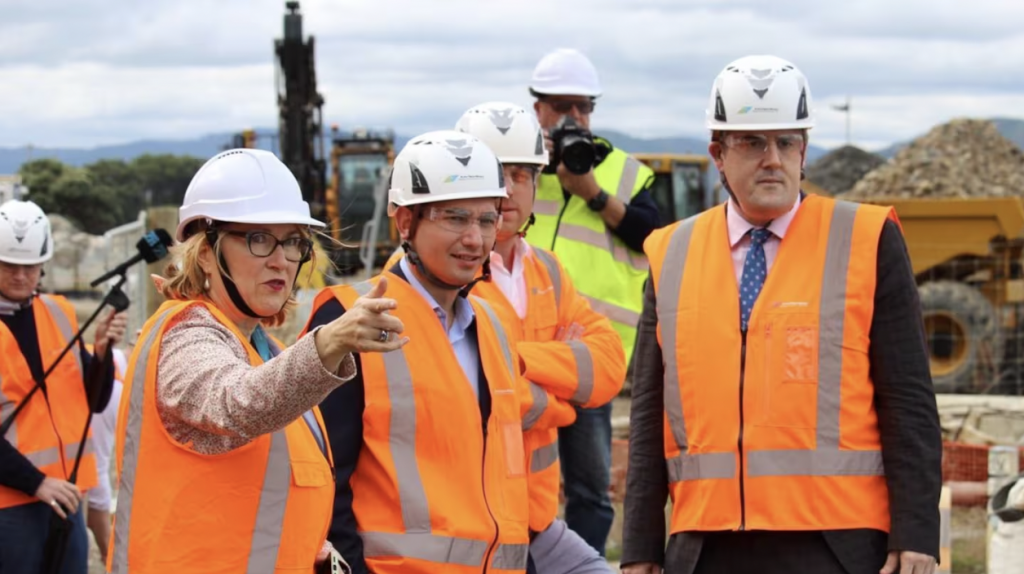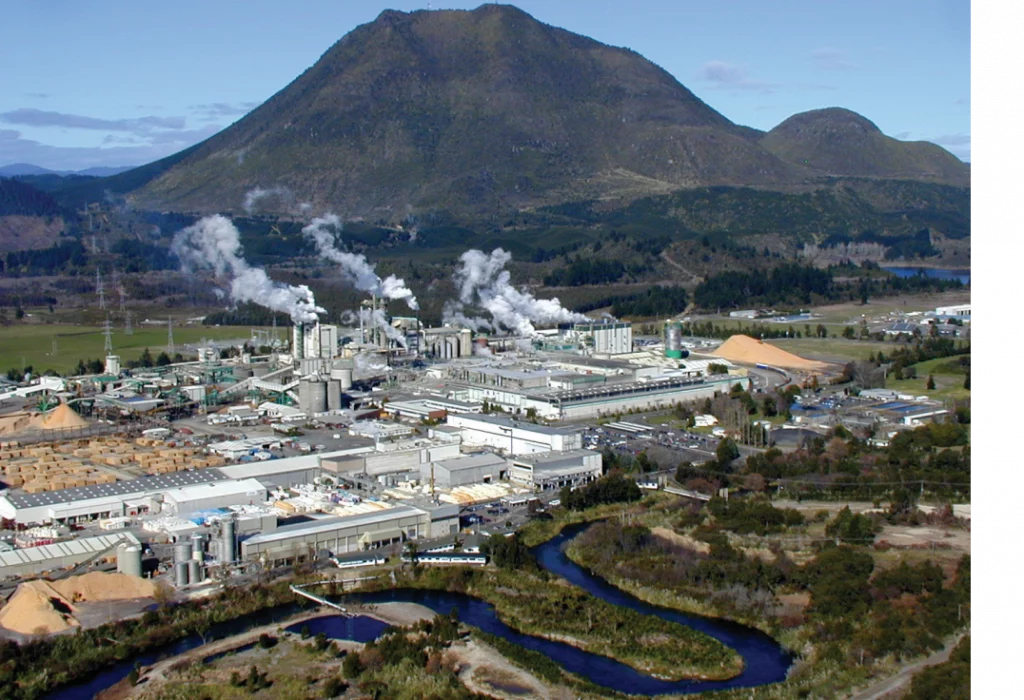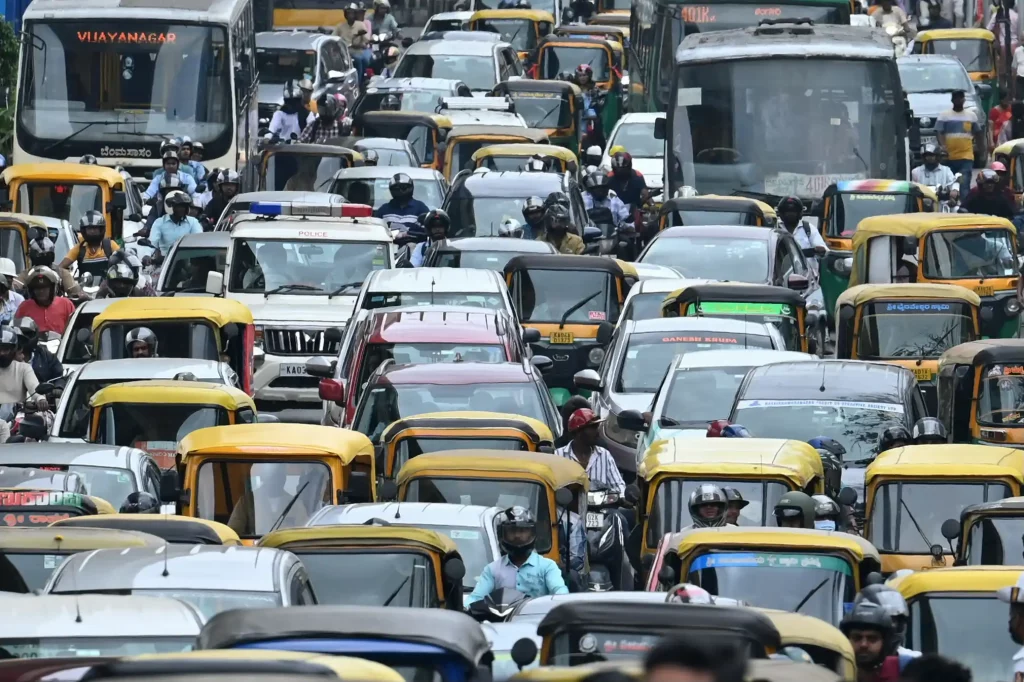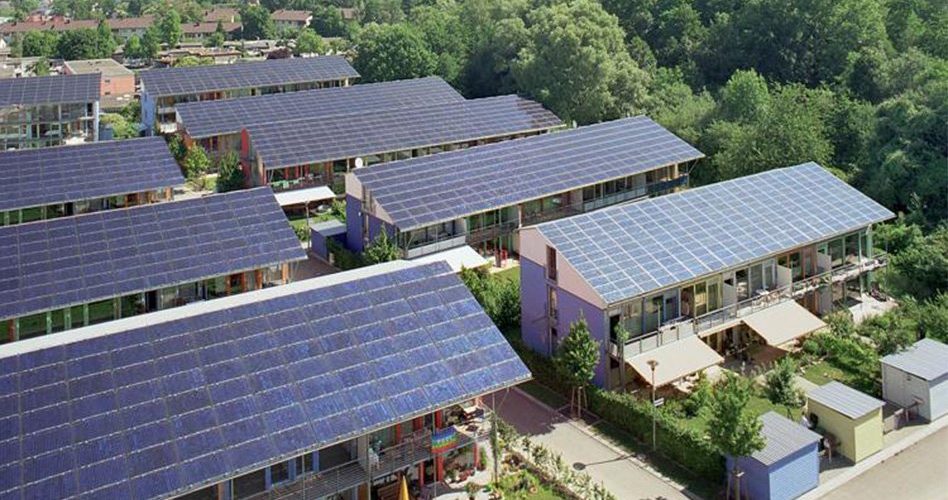What a curious government we have at present, full of balls, bald heads and bravado, but not much in the brains department.

There are many possible instances that come to mind that could illustrate that well, but this week’s announcement that NZ is now going to import gas to burn to make electricity, is one of the more bizarre and stupid recent announcements. Our great esteemed leaders must have thought about it long enough to plan out a news conference, which they hosted with two bright and shiny Ministers earnestly saying that “It was all Labour’s fault” and “We need Gas drilling NOW!” but there was not a lot of thought going much further than that.

Extraordinarily, our largest industrial users are on the point of shutting up shop and closing the doors permanently because they cannot get power. We have the Pulp and Paper mills in the central North Island closing up for good within weeks, but the warning signs must have been there for a while. If they go, so does the population of Tokeroa, probably either to Auckland or more likely, to Aussie. It is absolutely a problem – once the Kawarau Mill goes, we will probably never get it back. Like everything else, we will just have to order it in from overseas.

The answer from the government lunkheads is that we need to import LPG immediately and also start to build a terminal to store it. Plus foreigners might want to give us money to dig some holes in the ground to find more gas. How many years would that take? At a guess, maybe 3 years at a minimum? More like 5 years probably? It may well have rained in the intervening period – and in fact, it rained non stop for the last 48 hours, although all in the wrong areas. The problem is, of course, that our Energy market is broken. There is little incentive from industry to do anything to lessen the problem, because of course when we (the public) suffer, the energy companies make their millions of profit. And that is the way some previous bright spark government minister set up the whole system to work.

A far better idea would be to mandate every single new house in Aotearoa to have a solar PV electric array (except maybe Gore). And then plan for ALL the existing houses to be retrofitted with Solar PV as well. Yes, that would take some time as well, but it would all work towards an overall change in our power consumption as well. Most countries in Europe understand this well, and have retrofitted their electrical markets to work this way.

In Germany, you used to get four times the price of energy when you generated it off your rooftop and sold it back to them. There was a big fuss when the Merkel government reduced that down to merely three times. As a result, PV cells appear on every rooftop in Germany and other enlightened countries. Even the cowshed and the pig barn at my friend’s place in Germany has PV cells on, generating power and earning money. So much so, the Germans are turning off their nuclear power stations, and have phased out coal. Plus, thanks to Putin and his mad war, they’ve turned off gas as well.

Here in NZ, we are currently allowed to be officially screwed by the Electric system. Here, you might get back one third of the price you pay, if you’re lucky. There is literally no incentive to put solar on your rooftop, or a windmill in your back yard. If we had a government who was competent and could think intelligently, we too could power our country without gas or coal generators.

THIS is what we should be doing.





As much as I agree with you on the egg headedness of the govt decisino making, I believe your stats about German solar are a bit outdated. Currently you get about 8ct/kwh when partially feeding back from your home PV (“Einspeisevergütung”), compared to paying about 40ct/kwh when using power from the grid. A lot of the “money earning” happened in the 2010s, with generous decade-long state guarantees on high buy-back prices. Source: https://www.lichtblick.de/wissen/solar/einspeiseverguetung-in-der-eu/
I’m a German living in Wellington, but back in the motherland at the moment. It’s really interesting talking to Germans about heat pumps: For many it’s either not cost effective due to the cost of retrofitting into brick walls and radiators, or they’re scared of electricity market shortages in winter. Solar battery storage ain’t going to heat your home at -10 degrees outside. On the other side, Germans produce so much peak solar in summer that larger arrays need to have a function to be remotely shut off to protect the grid (reducing your earnings).
So overall I consider myself very lucky living in NZ, with our natural advantages around stored energy (hydro lakes), and solar+battery nearly close to making financial sense *without* subsidies now (as per http://rewiring.nz).
Thank you Ingo, and yes, I am truely saddened that you have provided me with updated figures. But it was a brilliant move by the German government, who changed the way that their country generates power, for ever. If only we had a governemnt with enough nous to figure out that THIS is the way forward, and building a gigantic gas storage facility is not the way forward.
If you are reading this again Ingo – can you give us an update on the rest of the German power system? Are the nuclear plants still closed down? or was that just a temporary thing? And the coal-fired plants – there still? or gone? I know they have huge amounts of windmills generating power – is there any hydro? I’m presuming not, as the rivers are fairly flat and used for freighting goods on barges.?
Not Ingo, but from Germany:
Nuclear plants are all closed now and won’t open up again in a hurry. We’re still burning too much coal and gas (just no longer mostly Russian gas).
In their homes, people still burn a lot of oil (or gas). Some (many?) freaked out when the current government recently wanted to phase out private oil & gas heating and installed new gas burners so those would be grandfathered.
Current plans are to phase out coal by 2038, but who knows.
Lots of rules around solar still not optimized as incentives for new private capacity building.
We share a house with our landlords. They put a large array up and wanted to sell electricity to us. But they are not allowed to (because they received public subsidy or loan I believe).
Now they have to sell their over production at 8C/kWh to the grid and we have to buy it at 26C or thereabouts, despite effectively using the power they generate.
But at least the energy will also be used for the central heating (heat pump + solar thermal + PV) and make that a bit cheaper.
There is also no financial incentive for people to buy ‘clean’ energy. It is typically a Cent or two more expensive than ‘regular’ power.
There is hardly any hydro power generation.
On the plus side, the rules around running ‘balcony solar power’ are now improved.
Lots of people in Germany rent and don’t have control over what goes onto their roofs. But they can put up PV on their balconies and reduce the amount of power they need to pull from the grid.
Thank you Diessoli – fantastic informative reply. I love the idea of balcony solar power, and also the heat pump / solar thermal being generated by the landlord and so the whole building gets warmer. We almost never do that here, more’s the pity.
Welcome back Fishy one. Another point worth noting is that the process of digging up natural gas and refining it to make petroleum gas and then condensing it into liquid form so then you can burn gas to heat water to create steam to spin a turbine to create electricity is… just about the most wasteful use of energy on the planet, not even counting the colossal waste of fossil fuel. Stupid, stupid, stupid. Most of the energy is wasted along the way.
By comparison if you use natural gas to cook with, nearly all of it goes straight into cooking the food. Similarly, while PV panels are only 15-20% efficient in converting the sun’s energy into Electricity, at least that all goes straight into your powerpoint to run your fridge etc.
Bishop needs to go back to school to learn some basic physics!
And it turns out that using gas to cook your dinner gives you cancer, so another reason not to use it.
Never heard that one Chico – got any proof / references? I thought that it was just windmills that caused cancer! ? There’s some politician somewhere who keeps saying that, so it must be true…
But seriously, there must be millions of people using gas to cook with gas, including almost every single restaurant in the country and all around the world. Is that where all the cancer comes from? Actually, there could possibly be some truth – depending in the origin of the gas. Natural gas is, well, natural, and presumably just methane ie CH4. Which is quite a simple molecule. But on the other hand, LPG is apparently a mixture of propane, butane, propylene, butylene, and isobutane. So, something like, phew! C3H8+C4H10+C3H6+C4H8+C4H10 in some proportion – blimey! I think I’ll stick with natural gas for cooking please….
Yes to all of the above!
Can we please do it as part of a locked-in, longterm infrastructure plan though? If it becomes a political point scoring exercise (also see: ferries, tunnels, EV rebates etc. etc.) then we’ll be stuck flip flopping on each change of government while the trained people leave for places that have their shit together.
Well worth a listen if you haven’t caught it: https://www.rnz.co.nz/national/programmes/ninetonoon/audio/2018953071/electrification-could-save-nz-95-billion-by-2040-report
And a small fix – it’s Tokoroa not Tokeroa ✌️
Thanks James !! It’s always been Toke roa in my heart, maybe because of the nature of the forest greens nearby !
But I’m happy to stand corrected !
Now, how do we get the Gov to make these big connected-up-thinking jumps that it needs to make ?
Govt legislation to mandate solar charging credits at , say, 3x cheaper than delivery for x amount of years for new solar installs
Company tax credits for warehouse roof solar installs provided there is enough backhaul in the power distribution network to take it
A levy on power gentailer profits to fatten out backhaul capacity in networks near and where they supply
An algorithmically calculated tax on gentailers which rathets up when they profit-take and down when they commission new-build capacity
People respond to incentives
Best answer yet Mr 60MPa ! Four points absolutely nail it. That’ll do it. Simeon, and various Chrises, if you’re listening / reading this – please follow 60’s instructions.
Meanwhile they are cutting cycleways
https://www.rnz.co.nz/news/political/526837/government-to-spend-nearly-33-billion-on-transport-over-the-next-3-years
Despite what the chattering classes may want, I think this will be popular
And spending $5.5 BILLION on repairing potholes. That’s not including $8.6 billion to state highway and local road improvements, $6.4 billion for public transport, and $4.6 billion into maintenance.
Five and a half bleeding billions on potholes !!!!! That Simeon is a fool.
IMHO, people over-think solar. At a basic level it doesn’t need to be anywhere as complicated as it normally is and a cheap-arse solar set-up could be rolled out on (say) all Kainga Ora new-builds tomorrow (and retro-fitted to others as time goes by). Probably 90% of all households already have an energy battery installed and operating at the moment; it’s called the hot water cylinder. There are basic systems being used around the world (particularly in developing countries but also in the United States) that take advantage of this. With hot water normally being the single largest electricity cost for a household, the system essentially is a 2-element cylinder. One element is connected to mains AC electricity, the other element (slightly different design) is wired directly to the DC output of a solar panel/s. There are no inverters, no electric batteries, no computer controllers, no meters; nothing that adds any complication which helps keeps the cost down. The DC element does the bulk of the heating during the day. Any further heating required to lift the temperature of the water up to the safe-zone of 60c is done using the AC mains-powered element. A simple solution resulting in substantial power saving for minimal investment.
Good on you John – very good honest straightforward thought. I guess you are 100% right – but then, so why are we not doing it?
In 2024 rooftop solar is a boon doggle,, but not for the reasons you think ….
Commercial grid scale solar is eating residential solar’s breakfast,
A 3KW roof system will cost around 9K NZD, that’s $3/KW installed,
Contact are building a 168MW plant at CHC airport for $275 million,, that’s $1.60/MW installed
i.e 50% of the cost of roof solar.
https://lightsourcebp.com/nz/news/new-zealand-lightsource-bp-secures-nz267m-financing-package-for-kowhai-park-solar-farm/
I’ve had a quick google and I can find nearly 1500MW of commercial scale solar either under construction or in the consent process,
Contact’s plant for 168MW uses 300K panels,
A typical 3K home install is usually ~10 panels , so 168MW from Contact is the same as 30.000 houses,
scale that to 1500MW and its the same as putting solar on 270,000 homes…….
1500MW solar will generate around 2500Gwh, (NZ’s total power consumption is around 40K Gwh,) so its a significantly bump – + There is also a bunch more wind comping on line too.
Out of idle curiosity, what’s the lifespan of a solar panel, and what happens to them at the end of their life?
This says 25-30 years, recycling is possible but expensive
https://www.minterellison.co.nz/insights/when-the-sun-sets-on-solar-panels-end-of-life-solu
That’s a similar lifespan as a wind turbine,
A gas turbine is 30-40 years, but during that time a large number of component parts may have been replaced aka “Grandfather’s axe/ship of Theseus”
Hydro is about the same,
Meridian effectively replaced all the moving and electrical parts of the Manapouri power station in 2003, – approx 30 odd years after commissioning…
https://www.hydroreview.com/technology-and-equipment/turbines-and-mechanical-components/refurbishment-upgrading-turbines-at-manapouri/#gref
This is a good read on the the amount of waste generated per type of energy generation.
Doesn’t include hydro or wind, but it puts the other (fossil fuel types) into perspective against solar.
https://www.sustainabilitybynumbers.com/p/renewables-waste
Thanks Greenwelly – and incidentally, on that site I found this article about the Snowy pumped storage solution for New South Wales – like our potential Onslow system that National scrapped.
https://www.hydroreview.com/hydro-industry-news/pumped-storage-hydro/to-speed-up-timeline-snowy-2-0-pumped-storage-gets-fourth-tunnel-boring-machine/
Interesting but long read at https://ukfoundations.co/ which relates to Britain but given the way we follow their thinking a lot is applicable to NZ. The whole essay is worth taking the time to read.
Quite a way through there a section about energy which is a warning not to get hopes up that renewables will necessarily stabilise let alone reduce energy costs.
Some selected quotes:
“…intermittent renewable energy is nowhere near commercially competitive.”
“… as well as the direct subsidy needed to make intermittent sources of electricity profitable, these renewables increase other system-level costs that are paid by consumers. There are three main sources of this:
More need for transmission lines to connect generation to households and industry. …
Increased grid balancing costs. Electricity supply must be matched to demand on a second-by-second basis. As increasing fractions of the generation mix become weather-dependent and hence to a degree uncontrollable and unpredictable, the grid operator needs to spend more money both on paying generators to switch off when supply exceeds demand, but also for emergency backup generation to come online when wind speeds drop…
The costs of paying for backup capacity…
Since these plants will, in optimistic Net Zero scenarios, operate relatively rarely and so be unable to sufficiently recoup their costs through electricity sales alone, they will likely require ongoing subsidy…
Once these system-level costs are accounted for, building a grid around wind and solar power is much more expensive than implied by the Levelized Cost of Energy (or LCOE) estimates typically cited by government departments or the press, and – along with the decommissioning of coal and gas-fired power plants since the 2000s – explains why Britain’s electricity costs have risen so much compared to other countries’.
None of this section is to say that intermittent renewables are bad or pointless. Reducing carbon emissions is essential, and the true cost of fossil fuels is higher than it appears because of the carbon emissions they create. We can improve efficiency by allowing electricity prices to reflect the actual cost of supplying electricity to a given premises (what is known as locational pricing) and the real-time value of the electricity (time-of-use pricing).
In many parts of the world the problems these power sources face are much less significant: for example, where there is more constant sunshine across the year, solar is much less intermittent…
But, for now, the current consensus in favour of large, increasing subsidies for intermittent renewables in Britain is a consensus in favour of high and rising energy costs.
In order to prosper again, Britain needs abundant and reliable clean energy. Intermittent renewables may be able to give us this someday, but they cannot provide it yet.”
Thanks Julienz and Greenwelly. Good comments !
I would still maintain that if there is any country capable of running 100% off renewable power, it is this one, Aotearoa. For a start, Germany has phased out its nuclear power stations through the mass adoption of rooftop urban solar – every farmhouse, every cowshed, every apartment block now seems to have PV roof panels. We could do that too, if we wanted to, and if we had a government that actually tried to.
But what happens when the sun doesn’t shine or the wind does not blow in Germany? Presumably they have a bit of a problem – and have to go back to nuclear or to coal powered stations sitting there waiting on standby, bubbling over at a slow boil. Their land is, for the most part, incredibly flat, with rivers used for bulk cargo transport, so that hydro is not as feasible as it is here. That’s the advantage we have here – we can use the hydro lakes as our back up battery, and so much easier to turn on or off than a coal-fired power station. Plus, stored water does not need to be kept at a slow burn as does a coal station. Our current problem (ha ha!) is that we use hydro as our main tool – when it would be better used as our main backup tool.
If the lakes have enough capacity to warm us through the winter, concentrated distributed solar might get us through the other three seasons but we would need changes to the current market model.
Well, yes – that’s what I have been trying to say. Current financial model relies on never-ending supply of “free water” and then the gen-tailers make millions by spot-pricing for mega-bucks in the lulls. Government does not mind as they are the majority shareholder in the big elec companies Meridian, Contact and Genesis. Model needs to move back to having an organisation which sees the bigger picture, ie plans ahead, so we don’t have peaks and lows.
But the real problem is that we have, in effect, really heap power most of the time, which means we squander it, because it does not really affect us (residential) when prices go up. When power is really expensive, people try really hard ot avoid using it!
“Model needs to move back to having an organisation which sees the bigger picture, ie plans ahead, so we don’t have peaks and lows.”
The problem is we never had that model, and no one thought ahead, We’ve always had power crises when the rain didn’t fall…..
Here’s 1992
“the nation’s sole electricity generator, which called for nationwide cuts of 10 per cent, later raised to 15 per cent, to avoid rationing.
Auckland region power boards responded by cutting households’ water heating, shops dimmed their lights, businesses cut back wherever they could and stretches of the Auckland motorway system were left dark in their quietest hours.
Pubs closed early; TVNZ and TV3 moved their nightly close-down time forward by an hour or so; an interisland ferry hooked its generators to the national grid and the Government looked at cloud-seeding options from Australia.”
https://www.nzherald.co.nz/nz/how-we-learned-the-lessons-from-1992/NLFVIOGURGV7GAL3XCHNWBX4ZM/
And people will say, Oh that was because they had been corpritised, it was much better with the Government NZ Electricity Department
Here’s 1972
“Droughts in 1972 and 1973 resulted in electricity rationing. Shop window lighting, neon advertising and flood lighting were all banned, and domestic users were urged to ‘save power, shower with a friend’.”
https://teara.govt.nz/en/hydroelectricity/print#1
Thanks for the timeframe.
Thirty years or so isn’t a particularly long time for a power station to last. The Mangahao hydro station out the back of Shannon is coming up to it’s centenary in November. During it’s life so far, a solar installation would have had to be built three times, which strikes me as inefficient to the point of absurdity. Maybe it’s good for another hundred years, in which case that’s six rebuilds of it’s solar equivalent.
This also raises the question of what to do with the small mountain of redundant solar panels. As I understand it, there’s currently no comprehensive or economic way to recycle them, so I suspect that the New Zealand solution would be the traditional one of dumping them in a gully somewhere out the back of the Kaimanawas.
Then the inherently intermittent nature of solar means that either battery storage or a secondary power source is a compulsory necessity, which means that a distribution/reticulation grid is unavoidable.
Overall, I think that while the immediate attractions of solar power are highly visible, the costs of solar power are often hidden in the blend of private benefit vs social cost.
But hey – what would I know?
Mangahao Power Station
https://en.wikipedia.org/wiki/Mangahao_Power_Station
IEEE Spectrum articles on solar panel recycling
https://spectrum.ieee.org/solar-panel-recycling-2668499710
https://spectrum.ieee.org/solar-panel-recycling